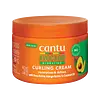What's inside
What's inside
 Key Ingredients
Key Ingredients

 Benefits
Benefits

 Concerns
Concerns

 Ingredients Side-by-side
Ingredients Side-by-side

Water
Skin ConditioningGlycerin
HumectantCetearyl Alcohol
EmollientCanola Oil
EmollientPersea Gratissima Oil
Skin ConditioningButyrospermum Parkii Butter
Skin ConditioningCeteareth-20
CleansingGlycol Distearate
EmollientPetrolatum
EmollientParfum
MaskingCeteth-20
CleansingPEG-75
HumectantPolyquaternium-10
Phenoxyethanol
PreservativeEthylhexylglycerin
Skin ConditioningLinalool
PerfumingHexyl Cinnamal
PerfumingLactic Acid
BufferingSodium Phytate
Benzyl Salicylate
PerfumingTetrasodium Glutamate Diacetate
Geraniol
PerfumingHelianthus Annuus Seed Oil
EmollientLecithin
EmollientAscorbyl Palmitate
AntioxidantTocopherol
AntioxidantBenzyl Alcohol
PerfumingCitric Acid
BufferingArgania Spinosa Kernel Oil
EmollientCocos Nucifera Oil
MaskingDaucus Carota Sativa Seed Oil
EmollientGlycine Soja Oil
EmollientMacadamia Integrifolia Seed Oil
Skin ConditioningMangifera Indica Seed Butter
Skin ConditioningMangifera Indica Seed Oil
EmollientMelia Azadirachta Seed Oil
EmollientOlea Europaea Fruit Oil
MaskingPrunus Amygdalus Dulcis Oil
Skin ConditioningSimmondsia Chinensis Seed Oil
EmollientVitis Vinifera Seed Oil
EmollientAloe Barbadensis Leaf Juice
Skin ConditioningSilk Amino Acids
HumectantMacrocystis Pyrifera Extract
Skin ConditioningSalvia Officinalis Leaf Extract
CleansingUrtica Dioica Leaf Extract
Skin ConditioningLonicera Caprifolium Extract
AstringentVitis Vinifera Seed Extract
AntimicrobialPotassium Sorbate
PreservativeSodium Benzoate
MaskingHydrolyzed Silk
HumectantWater, Glycerin, Cetearyl Alcohol, Canola Oil, Persea Gratissima Oil, Butyrospermum Parkii Butter, Ceteareth-20, Glycol Distearate, Petrolatum, Parfum, Ceteth-20, PEG-75, Polyquaternium-10, Phenoxyethanol, Ethylhexylglycerin, Linalool, Hexyl Cinnamal, Lactic Acid, Sodium Phytate, Benzyl Salicylate, Tetrasodium Glutamate Diacetate, Geraniol, Helianthus Annuus Seed Oil, Lecithin, Ascorbyl Palmitate, Tocopherol, Benzyl Alcohol, Citric Acid, Argania Spinosa Kernel Oil, Cocos Nucifera Oil, Daucus Carota Sativa Seed Oil, Glycine Soja Oil, Macadamia Integrifolia Seed Oil, Mangifera Indica Seed Butter, Mangifera Indica Seed Oil, Melia Azadirachta Seed Oil, Olea Europaea Fruit Oil, Prunus Amygdalus Dulcis Oil, Simmondsia Chinensis Seed Oil, Vitis Vinifera Seed Oil, Aloe Barbadensis Leaf Juice, Silk Amino Acids, Macrocystis Pyrifera Extract, Salvia Officinalis Leaf Extract, Urtica Dioica Leaf Extract, Lonicera Caprifolium Extract, Vitis Vinifera Seed Extract, Potassium Sorbate, Sodium Benzoate, Hydrolyzed Silk
Water
Skin ConditioningPectin
Emulsion StabilisingCocos Nucifera Oil
MaskingAloe Barbadensis Leaf Juice
Skin ConditioningPanthenol
Skin ConditioningRicinus Communis Seed Oil
MaskingAlthaea Officinalis Leaf/Root Extract
EmollientAgave Americana Leaf Extract
Skin ConditioningEquisetum Arvense Extract
AstringentUrtica Dioica Leaf Extract
Skin ConditioningHydrolyzed Corn Starch
HumectantXanthan Gum
EmulsifyingChondrus Crispus Powder
AbrasivePolysorbate 20
EmulsifyingTocopheryl Acetate
AntioxidantCyanocobalamin
Skin ConditioningPhenoxyethanol
PreservativeCaprylyl Glycol
EmollientWater, Pectin, Cocos Nucifera Oil, Aloe Barbadensis Leaf Juice, Panthenol, Ricinus Communis Seed Oil, Althaea Officinalis Leaf/Root Extract, Agave Americana Leaf Extract, Equisetum Arvense Extract, Urtica Dioica Leaf Extract, Hydrolyzed Corn Starch, Xanthan Gum, Chondrus Crispus Powder, Polysorbate 20, Tocopheryl Acetate, Cyanocobalamin, Phenoxyethanol, Caprylyl Glycol
 Reviews
Reviews

Ingredients Explained
These ingredients are found in both products.
Ingredients higher up in an ingredient list are typically present in a larger amount.
Aloe Barbadensis Leaf Juice comes from leaves of the aloe plant. Aloe Barbadensis Leaf Juice is best known for helping to soothe sunburns. It is also anti-inflammatory, moisturizing, antiseptic, and can help heal wounds.
Aloe is packed with good stuff including Vitamins A, C, and E. These vitamins are antioxidants, which help fight free-radicals and the damage they may cause. Free-radicals are molecules that may damage your skin cells, such as pollution.
Aloe Barbadensis Leaf Juice also contains sugars. These sugars come in the form of monosaccharides and polysaccharides, folic acid, and choline. These sugars are able to help bind moisture to skin.
It also contains minerals such as calcium, 12 anthraquinones, fatty acids, amino acids, and Vitamin B12.
Learn more about Aloe Barbadensis Leaf JuiceCocos Nucifera Oil is obtained from the kernels of the coconut fruit. In other words, this is coconut oil.
Coconut Oil is rich in fatty acids with lauric acid making up the majority of these. It also contains linoleic acid. Due to this high fatty acid content, coconut oil helps trap moisture and soften skin.
Despite being antibacterial, coconut oil may not be great for acne-prone skin. It is comedogenic and may clog pores. This ingredient may not be safe for malassezia or fungal acne.
Note: Coconut Oil should not replace your sunscreen for UV protection. Studies show it only blocks about 20% of UV.
This oil is non-volatile and has a light scent.
The term 'fragrance' is not regulated in many countries. In many cases, it is up to the brand to define this term. For instance, many brands choose to label themselves as "fragrance-free" because they are not using synthetic fragrances. However, their products may still contain ingredients such as essential oils that are considered a fragrance.
Learn more about Cocos Nucifera OilPhenoxyethanol is a preservative that has germicide, antimicrobial, and aromatic properties. Studies show that phenoxyethanol can prevent microbial growth. By itself, it has a scent that is similar to that of a rose.
It's often used in formulations along with Caprylyl Glycol to preserve the shelf life of products.
We don't have a description for Urtica Dioica Leaf Extract yet.
Water. It's the most common cosmetic ingredient of all. You'll usually see it at the top of ingredient lists, meaning that it makes up the largest part of the product.
So why is it so popular? Water most often acts as a solvent - this means that it helps dissolve other ingredients into the formulation.
You'll also recognize water as that liquid we all need to stay alive. If you see this, drink a glass of water. Stay hydrated!
Learn more about Water